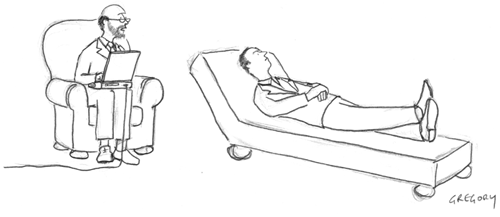Chapter 13. monitoring evolving your site
Chapter 13. monitoring & evolving your site"One of the people logged in to my web site has a question." don't miss ...
Once your site is planned, designed, built, and launched, you may feel a sense of accomplishment (and you should). But don't confuse a launch party with a finish line. Your work's only just begun. It's only after you've launched your site that you can begin to learn what works and what doesn't. Successful web development is an iterative process: You launch the site, study how it's used, and make continual changes to improve it. This is the advantage of the web over other media: Everything can be measured, and then changed to reflect what's been learned. The web is more measurable than
The measurability and flexibility of the web proves important to just about every industry, because it helps businesses understand their customers and better serve their needs. "Quantitative research on the Internet is so luxurious," says Adam Berliant, a group manager for Microsoft, and previously a lead product planner for MSN.com. "I cannot pick up an issue of Newsweek and tell you which article was read the most. Or how much time people spent on each article. Or which headline was the most effective. I can't do that. On the Internet, I can! I can tell you what 100% of the people who used this site did." But Berliant's interest isn't just academic. The purpose of studying your site is to figure out how to improve it. "I can run experiments and see which headline does better," he says. "I can take the same photo and run it with different headlines, or take different headlines and run them with the same photo or whatever combination of things I want to test."
The advantage of the web is that everything can be measured and changed to reflect what's been learned. "You end up with this ever-building cumulative picture of what works and what doesn't work on a particular web site," Berliant continues. "And the beauty of the web over software is I can take that learning and act on it tomorrow." In fact, this seems to be the beauty of the web over everything. Magazines, software, stores they all benefit from this immediacy. "There's enormous potential in the flexibility and constant changeability of the web site," said Hilary Billings, chairman of RedEnvelope and former VP of Pottery Barn. "The cement is always wet on the web, which is very different from stores and direct mail." "We have the ability on the web to rotate products all the time," Billings explained. "We can constantly change the environment, which in a store, you just can't. It's a lot of logistics to change a store. And the catalog, once it's printed, it's done." Continual improvement, it seems, is the secret behind so many sites' success. The big players, like Amazon and MSN, are always evolving. And smaller sites, too, benefit from this approach. But it's a big transition for many site owners. "In almost every other area of business certainly in technology the focus is on the product," says Andrew Anker, Internet pioneer and a partner at August Capital. "But on the web, it's really the process. The easy part is getting the product out. The real challenge is to figure out what you did right and wrong, and change quickly." Put plainly, Anker says, "The biggest mistake you can make on the web is thinking you're done." |
EAN: 2147483647
Pages: 195
